Tereza Novotná
It Cannot Be Right If It Was Written by AI: On Lawyers' Preferences of Documents Perceived as Authored by an LLM vs a Human
Jul 09, 2024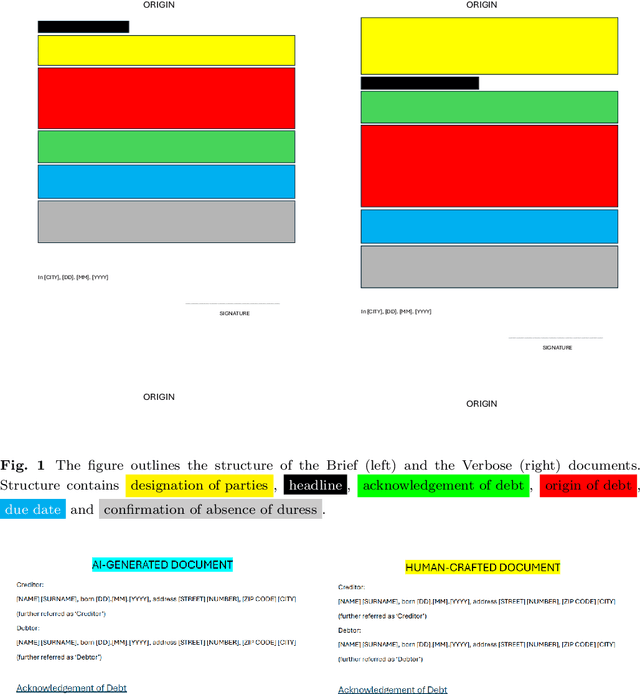
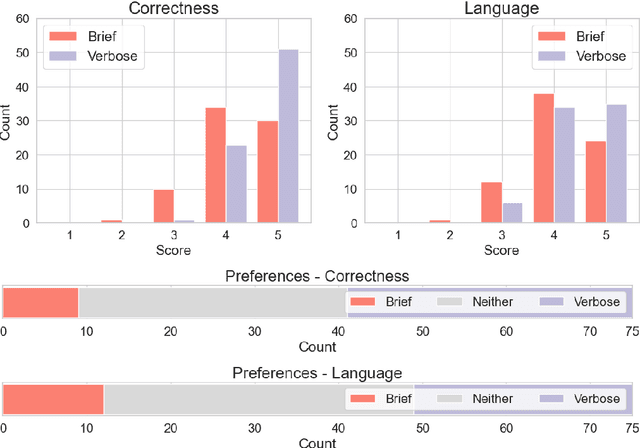
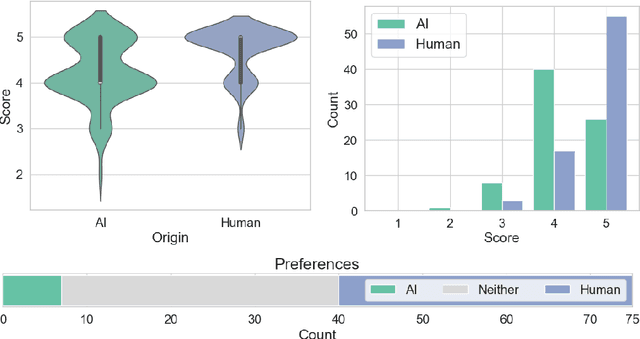
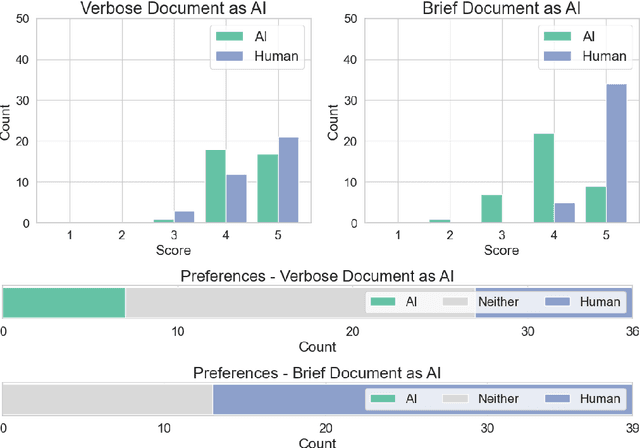
Abstract:Large Language Models (LLMs) enable a future in which certain types of legal documents may be generated automatically. This has a great potential to streamline legal processes, lower the cost of legal services, and dramatically increase access to justice. While many researchers focus their efforts on proposing and evaluating LLM-based applications supporting tasks in the legal domain, there is a notable lack of investigations into how legal professionals perceive content if they believe it has been generated by an LLM. Yet, this is a critical point as over-reliance or unfounded skepticism may influence whether such documents bring about appropriate legal consequences. This study is the necessary analysis in the context of the ongoing transition towards mature generative AI systems. Specifically, we examined whether the perception of legal documents' by lawyers (n=75) varies based on their assumed origin (human-crafted vs AI-generated). The participants evaluated the documents focusing on their correctness and language quality. Our analysis revealed a clear preference for documents perceived as crafted by a human over those believed to be generated by AI. At the same time, most of the participants are expecting the future in which documents will be generated automatically. These findings could be leveraged by legal practitioners, policy makers and legislators to implement and adopt legal document generation technology responsibly, and to fuel the necessary discussions into how legal processes should be updated to reflect the recent technological developments.
Lex Rosetta: Transfer of Predictive Models Across Languages, Jurisdictions, and Legal Domains
Dec 15, 2021
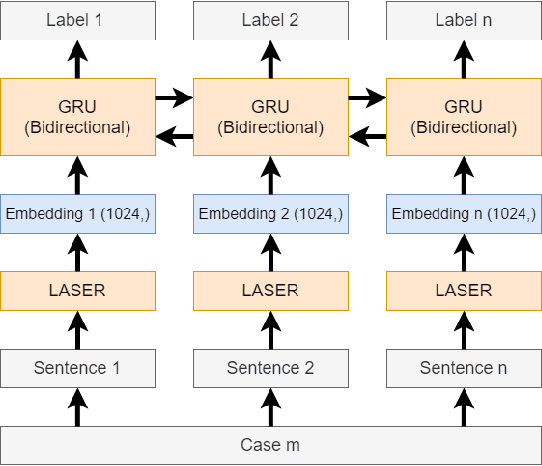

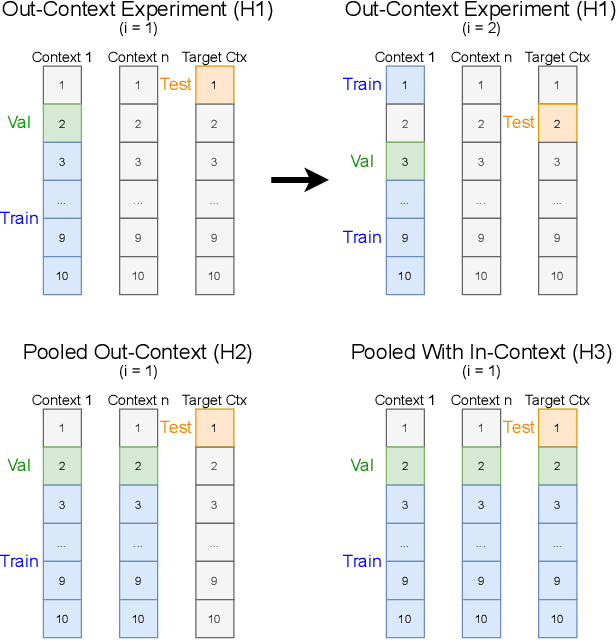
Abstract:In this paper, we examine the use of multi-lingual sentence embeddings to transfer predictive models for functional segmentation of adjudicatory decisions across jurisdictions, legal systems (common and civil law), languages, and domains (i.e. contexts). Mechanisms for utilizing linguistic resources outside of their original context have significant potential benefits in AI & Law because differences between legal systems, languages, or traditions often block wider adoption of research outcomes. We analyze the use of Language-Agnostic Sentence Representations in sequence labeling models using Gated Recurrent Units (GRUs) that are transferable across languages. To investigate transfer between different contexts we developed an annotation scheme for functional segmentation of adjudicatory decisions. We found that models generalize beyond the contexts on which they were trained (e.g., a model trained on administrative decisions from the US can be applied to criminal law decisions from Italy). Further, we found that training the models on multiple contexts increases robustness and improves overall performance when evaluating on previously unseen contexts. Finally, we found that pooling the training data from all the contexts enhances the models' in-context performance.
* 10 pages
Citation Data of Czech Apex Courts
Feb 06, 2020



Abstract:In this paper, we introduce the citation data of the Czech apex courts (Supreme Court, Supreme Administrative Court and Constitutional Court). This dataset was automatically extracted from the corpus of texts of Czech court decisions - CzCDC 1.0. We obtained the citation data by building the natural language processing pipeline for extraction of the court decision identifiers. The pipeline included the (i) document segmentation model and the (ii) reference recognition model. Furthermore, the dataset was manually processed to achieve high-quality citation data as a base for subsequent qualitative and quantitative analyses. The dataset will be made available to the general public.
The Czech Court Decisions Corpus (CzCDC): Availability as the First Step
Oct 21, 2019Abstract:In this paper, we describe the Czech Court Decision Corpus (CzCDC). CzCDC is a dataset of 237,723 decisions published by the Czech apex (or top-tier) courts, namely the Supreme Court, the Supreme Administrative Court and the Constitutional Court. All the decisions were published between 1st January 1993 and 30th September 2018. Court decisions are available on the webpages of the respective courts or via commercial databases of legal information. This often leads researchers interested in these decisions to reach either to respective court or to commercial provider. This leads to delays and additional costs. These are further exacerbated by a lack of inter-court standard in the terms of the data format in which courts provide their decisions. Additionally, courts' databases often lack proper documentation. Our goal is to make the dataset of court decisions freely available online in consistent (plain) format to lower the cost associated with obtaining data for future research. We believe that simplified access to court decisions through the CzCDC could benefit other researchers. In this paper, we describe the processing of decisions before their inclusion into CzCDC and basic statistics of the dataset. This dataset contains plain texts of court decisions and these texts are not annotated for any grammatical or syntactical features.
 Add to Chrome
Add to Chrome Add to Firefox
Add to Firefox Add to Edge
Add to Edge